#minhag
Text
I understand and agree with pointing out that the Holocaust didn’t just affect the Jews that lived in Europe, and shedding light on the stories of Jews in other territories under Axis control. Every life lost or uprooted in the Holocaust matters and deserves to be remembered, not just Ashkenazim.
However, I’ve been seeing a bit of an overcorrection to the point that this valid & important point get twisted by some into the idea that Ashkenazim weren’t actually all that affected by the Holocaust at all and may have actually been safer than other Jews due to being White/European*, and I wanted to walk through exactly why that is so far from the reality and gets into really dangerous Holocaust Distortion.
The fact is that the vast majority of Holocaust victims were Ashkenazim. How do we know this? Well, first and most obvious without even getting into the numbers: the Nazis were most active in Eastern Europe, where most Jews were overwhelmingly Ashkenazi. Germany had colonies elsewhere and the affect the Holocaust had on Jews living in Africa and Asia is not any less important (and the fact remains that their stories are a genuine gap in Holocaust education that needs to be filled), but this doesn’t change the fact that the center of Nazi activity was Europe, and thus that is where their impact on Jews was most intense. But it’s important to not just go off of what seems “obvious” because what’s obvious to any given person is subjective and subject to bias. So let’s look at the numbers:
Estimates prior to the Holocaust put Ashkenazim at 92% of the world’s Jewish population (or roughly 14 million of the 15.3 million total Jewish population), meaning that it would be physically impossible for less than 4.7 million (or 78%) of the 6 million Jews murdered in the Holocaust to be Ashkenazim.

Even that number is only possible to reach by assuming that only Ashkenazism survived and literally every non-Ashkenazi Jew died in the Holocaust, which we categorically know is not the case due to the continued existence of Sephardim & Mizrahim, as well as other Jews. So the number has to be higher than 78%.
Additionally, the fact that the proportion of the world’s Jewish population that was Ashkenazi fell so drastically during to the Holocaust and still hasn’t recovered (from 92% in 1930, only recovering to close to 75% in the last couple decades) means that not only a higher overall number of deaths were Ashkenazim, but that a higher proportion of the total Ashkenazi population died than from other groups.
We also know that 85% of Jews killed in the Holocaust were Yiddish-speakers. The fact that Yiddish is endemic to Ashkenazi culture (and not all Ashkenazim would have even been Yiddish-speakers) due to assimilation means that at least—and most likely more than—85% of Jews killed in the Holocaust were Ashkenazi.
So, no, Ashkenazim were not some privileged subcategory of Jews who avoided the worst of the Holocaust. They were the group most directly devastated by it.
That doesn’t change the fact that the devastation the Nazis and their allies wreaked on other Jews is every bit as important to acknowledge and discuss, and must not fall by the wayside. The stories and experiences of all victims & survivors deserve to be heard, remembered, and honored, not just the most common or most statistically representative of the majority of victims. However, we can (and must) do that without allowing the facts of the Holocaust to be distorted or suggesting Ashkenazim were somehow less affected by the Holocaust or more privileged under the Nazis. The Nazis hated all Jews. Antisemitism affects all Jews. Period.
*without getting too deep into how categories like Ashkanzi/Sephardi/etc. don’t map neatly onto race like so many people seem to want them to. that’s a different post, but just pointing that out
94 notes
·
View notes
Note
Hey so question: was looking at mezuzah cases and the one seller offered scrolls to go with, but they mentioned that the scrolls might not be considered kosher for Chabad or Lubavitch. Any idea why this might be?
So, first off, Chabad and Lubavitch are essentially the same thing.
The seller was probably referring to the fact that many in the Chabad Lubavitch movement only use mezuzot that use either the Alter Rebbe script or the Arizal script, since those incorporate the Kabbalistic and Chassidic values of the movement. So, if the Mezuzot you're looking aren't written in those fonts, then they likely wouldn't be preferred by Lubavitchers. It's all down to Minhag (custom).
32 notes
·
View notes
Text
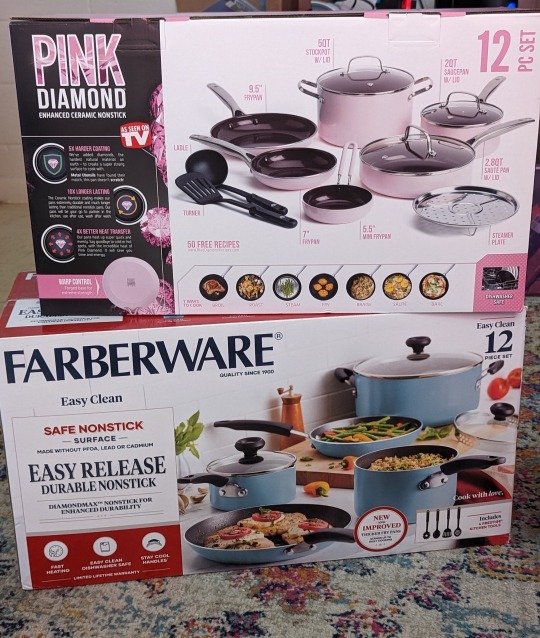
My minhag is cuteness
#kosher#pink instead of red ofc#and light blue#kashrut#frumblr#jewish#jumblr#judaism#nesyapost#my minhag is cuteness#nesyadiarypost
23 notes
·
View notes
Text
me, Ashkenazi, sobbing and crying: please just tell me if I can buy secondhand glassware and kasher it
Every resource I’ve found: here are at least three mutually exclusive opinions ranging from “no you absolutely cannot” to “you don’t have to do more than just wash them”
#In reality my minhag for glass is to hold like sefardim#Like that’s my family minhag wrt glass#But#ough
6 notes
·
View notes
Text
Jewish Custom (Minhag) Versus Law (Halacha) from My Jewish Learning
#Jewish Custom (Minhag) Versus Law (Halacha)#My Jewish Learning#Jewish Studies#Bookshelf#Tumblr Staff Has Ruined Links Now And I Hate Them For It
0 notes
Text
RH seder at my rabbi’s place was such a nice reminder of how it feels to just /be/ with a community, something I haven’t experienced for quite some time after moving to a different country.
#jumblr#getting to experience a sephardi minhag was also nice since the community is mostly Ashkenazi
1 note
·
View note
Text
Fuck it I'm bored so here's a ranking of different Peter Parkers by how Jewish they are

Dead last, obviously, is MCU!Peter Parker. This version of Peter is the farthest from comic canon to the point of being almost unrecognizable at times. Also, Tom Holland answered the question "is peter parker Jewish" in a Wired Autocomplete Interview a while back with a very baffled "no", cementing him forever as my sworn enemy. So he's actually the only peter parker who, at least by word of God, is canonically NOT Jewish. -1000000/10
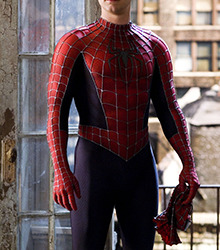
Next up is Tobey Maguire's Peter Parker. I think this Peter is... fine, at least he's much closer to comic canon than MCU!Peter, but honestly that's not saying much considering how far the MCU strayed from comic canon or even the spirit of comic canon. But like overall, Sam Raimi's movies just aren't particularly interested in presenting Peter as Jewish, so, eh. 1/10

By far the most Jewish of live action Peters is TASM!Peter, also by far the most comic accurate of live action Peters. I'd be remiss not to mention the fact that Andrew Garfield is Jewish, and he understands the character so fucking well. He stated on record that he played Peter as Jewish and that he sees Spider-Man as an inherently Jewish character:

However, the Webb movies still do not textually define him as Jewish, and the best parts of Andrew's Peter's Jewish subtext are better when viewed in light of the comics. Overall, 6.5/10
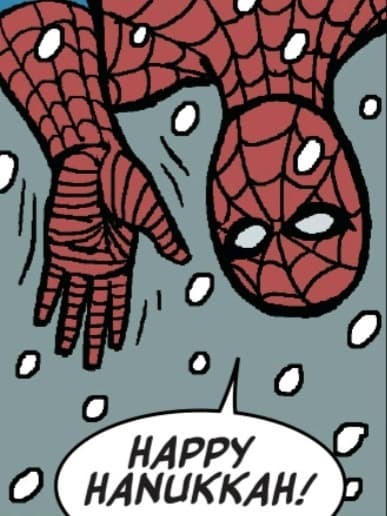
Next up is the original, our beloved comic book Peter, pictured here saying Happy Hanukkah in a panel from Matt Fraction's Hawkeye. Comic Peter is one of the most heavily Jewish coded comics characters of all time, which is saying something considering how Jewish comic books are as a medium. Obviously he was created and often written and drawn by Jewish writers and artists, but beyond that his driving ethos and values are incredibly Jewish, and as a bonus he's constantly sprinkling Yiddish and Jewish phrases into his speech, alongside things like the above panel where he outright acknowledges Jewish culture in a scene where everyone else is saying merry Christmas. However, despite the extremely heavy coding, Marvel Comics are fucking cowards, and he has yet to be confirmed Jewish, so I must give him a measly 8/10.

Finally, the cream of the crop, the most Jewish of all Peter Parkers, Into the Spider-Verse's Peter B. Parker my beloved!!! Peter B. is voiced by Jake Johnson, himself a Jewish actor, and is a phenomenally accurate representation of comic book canon - but he also has the unique quality of being canonically, textually, in the actual movie Jewish! It's a bit of a blink and you'll miss it scene, but when we get introduced to Peter B. in his "one more time" segment, we see his wedding to MJ, where he steps on a glass. This is a Jewish minhag - custom - meant to represent the destruction of our Temple and Jerusalem, as well as remind us that sorrow and joy come intertwined, and is one of my personal favorite Jewish customs. It's a phenomenal moment in the best Spider-Man movie, and while this version of Peter would have been my favorite film version regardless, his Jewishness absolutely pushes him even further up. 13/10, no complaints
#jew tag#jumblr#comics#marvel#marvel comics#spiderman#peter parker#peter b parker#spiderverse#into the spiderverse#tasm#sam raimi#the amazing spider man#mcu#gail speaks#jewish superheroes
16K notes
·
View notes
Text
a reminder that ashkenazi and sephardi are not synonyms for white and brown. they denote many things like ancestry or community or minhag but they are not and have never been abt the person’s race.
563 notes
·
View notes
Text
Anti-Zionism & Purim:
Purim is a wonderfully joyous, often colourful and very tasty, Jewish holiday celebrated every year on the 14th of the Hebrew month of Adar (which corresponds to late winter/early spring). A holiday where drinking is a mitzvah, some dress up as characters from the Book of Esther, we gift good food and most definitely argue about which hamantaschen filling is best. Purim is about Jewish joy, resistance and outliving those who wish for our destruction.
Purim starts the evening of Saturday 23rd March, and ends at sundown the following day, Sunday 24th.
What’s the Purim story?
It is a story of salvation, of Jewish survival and being against all odds. The story of Purim comes from the salvation of the Jewish from Haman’s plot “to destroy, kill and annihilate all the Jews, young and old, infants and women, in a single day”. Haman, or Haman the Agagite, was a royal vizier in the court of the Persian empire, to King Ahasuerus/Xerxes I (465 BCE) who was agrivated by Moredcai, of the tribe Benjamin, and his refusal to bow down to his demands— thus Haman seeked revenge on his rejection and convinces the King to issue a decree to kill all Jews in the Persian empire. However the genocidal plot would soon be thearted by Hadassah, or as we know her, Queen Esther.
Queen Esther was an incredible Jewish woman whom the King Ahasuerus (transliteration of Xerxes) had fallen in love with. The Queen revealed her Jewish identity and pleaded with the King to spare her people, to which then, the King was appalled by Haman’s treachery— ordering his execution and granting Jews permission to defeat their enemies.
This story is apart of the Five Melligot (Melligah meaning “scroll” in Hebrew), the Book of Esther.
How is Purim celebrated?
Celebrating Purim depends on minhagim (customs) amongst Jewish cultural and ethnic communities: Ashkenazim may celebrate differently from Sefardim, who celebrate different from Middle Eastern, North African, South Asian and Ethiopian Jewry!
However, these are some universal rituals:
• Listen to the Purim story, the Book of Esther, typically at a Synagogue.
• Eating good for Seudah, a meal had during the day of Purim. Including foods such as pomegranate and wine brisket, hamantaschen, boyosa, challah with various toppings, rugelach, onion and poppy seed rings, hojuelas, kreplach, pickled vegetables and so much more.
• Mishloach Manot, gifting food to friends and/or family.
• Tzedakah, charity, and Metanot L’evyonim, supporting those in need.
• Haka’at Haman: during Megillah reading, there is a custom to make noise at the reading of Haman’s name. From stomping your feet to booing, this minhag is associated with Jewry of France and Provence, though has roots in Talmudic sources. You can read more here.
• Drinking lots of wine!
If you have any specific cultural Purim traditions, leave a comment! Traditions vary from family, to minhag, to cultures!
So, what do we learn from the story of Queen Esther?
Where our Rabbis may dress as Queen Esther, and we get drunk because it’s might be your favourite mitzvah, where we stick to tradition and try a new hamantaschen filling, and hearing the megillah like it’s the first time, all over again. Purim is where we introspect through our celebration; the very expression of joy, against all odds, is where we seek our growth. We exercise our liberty, our bravery and boldness— like Esther, we do not hide our Jewishness, instead we decorate ourselves. We do not stand in the face of adversity and let it through, we crush it and celebrate our resilience. Purim is a reminder of pride, of resistance and using your voice for those who may have theirs silenced. Like Queen Esther, we must not allow genocide and violence, and certainly not in our name as a people who have faught against it through out history. In honour of Purim, we must use what power we have to call for Tikkun Olam— a better future, for all.
Purim is where live to see ourselves dance and sing, the complete expression of G!d— HaShem, the Divine, the Universe, our collective human spirit— we live to build a future of many more Purims, many more celebrations of collective resistance. We dance and sing, and dress up, and drink, as is written, so that there is no world without this freedom.
Families often get creative in teaching their children, and communities, the importance of Purim, by making decorative masks to communicate the importance of identity, or dressing up in fun costumes inspired by strong characters, wether from the Purim story or just fictional worlds. Art is an incredible and important way to communicate, so if you want to get creative and make your own mask, costume or simply create artwork inspired by the story of Purim— tapping into your creative liberty is a wonderful ritual to add to your own traditions.
You can also show your gratitude to people, such as friends, family, service workers, activists, with gifts and letters to celebrate them and their bravery, their selflessness. Do you have anybody you’re greatful for, who’s inspired you to be more selfless, to give back?
What can I reflect on for Purim?
Think about how you show your Jewish pride, how you express your Jewish joy. Do you want to be more loud, more unapologetic, more open? How can you show up for others in need, who are in need for their voices to be uplifted? How can you do your part in building a future that celebrates total liberation from what tries to destroy us? Purim is about celebration, about joy, so as you join in on the festivities however you celebrate, remember that this full expression of your Jewish self is an act of resistance against a history of Jew hatred, a history of antisemitism, and that our existence will outlive the powers that pretend to be on our side.
How can I incorporate Palestine into my Purim celebrations?
Following traditions of donating and tzedekah, you can donate funds to GoFundMes of Palestinian families seeking refuge outside of Gaza, to ensure these families can make it to safety and eat well. We’ll be reposting and sharing GoFundMes and other calls for aid all day on Purim, if you’re looking to do some tzedekah.
As millions of Palestinians in Gaza are imminently facing starvation, you could aim to organise protests and rallies with your communities to demand action to be taken for immediate food distribution into Gaza. Be vocal on Purim, we’ll try to update you with any anti-Zionist events that may be happening across the world.
If you live near a Mosque/Masjid or Islamic community centre, you coulf drop off some Halal-safe food packages for Ramadan celebrations; sweets, pre-packaged/cooked foods and pastries. Your local Islamic food stores can definitely offer more guidance, and be sure to look out for the Halal logo! But, importantly, it’s always good to contact the Mosque or Community centre beforehand to see what donations they’re accepting!
If you’re visiting Shul, now more than ever is your time to challenge the narrative. Why must we turn away blind eye to a genocide whilst we celebrate our survival? Why must we allow the pain we have felt, pass to another, in the name of our survival? If you feel it is safe to do so, it is so irrevocably important to challenge the Zionist narratives that use our history, our holidays, our peoplehood to inflict harm that we once felt. As Queen Esther did, we must speak, and we must not be afraid to do so.
Further Purim readings:
The History of Purim
Laws and Customs of Purim
History of Purim costumes
We’re wishing everyone a happy, safe, healthy and beautiful Purim— please share with us how you’ll be celebrating this year, and keep an eye out for tzedekah posts to donate to Palestinians in need!
#purim#anti zionist jews#anti zionist purim#purim 2024#purim ideas#purim celebrations#what is purim#free palestine#purim for anti zionist jews#jewish holidays#info: purim
287 notes
·
View notes
Text

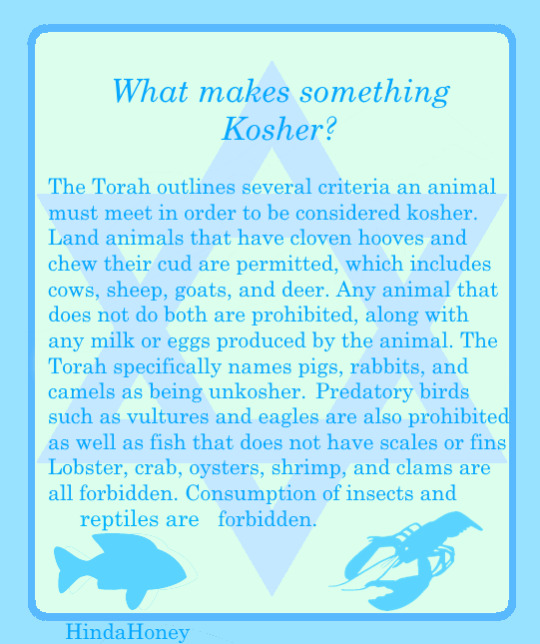


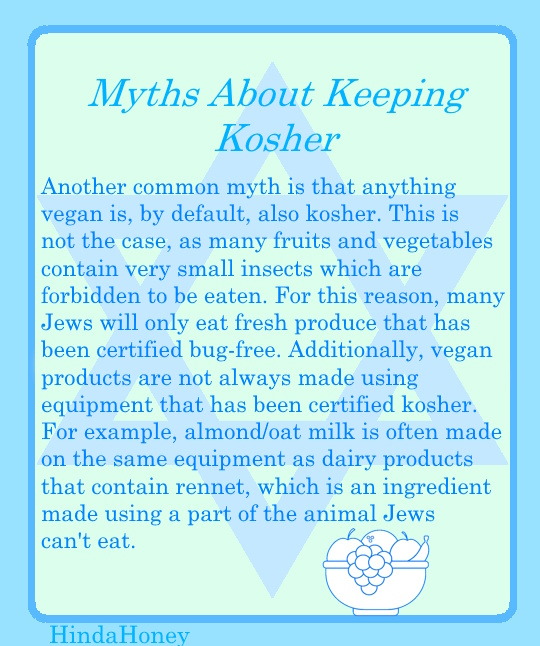
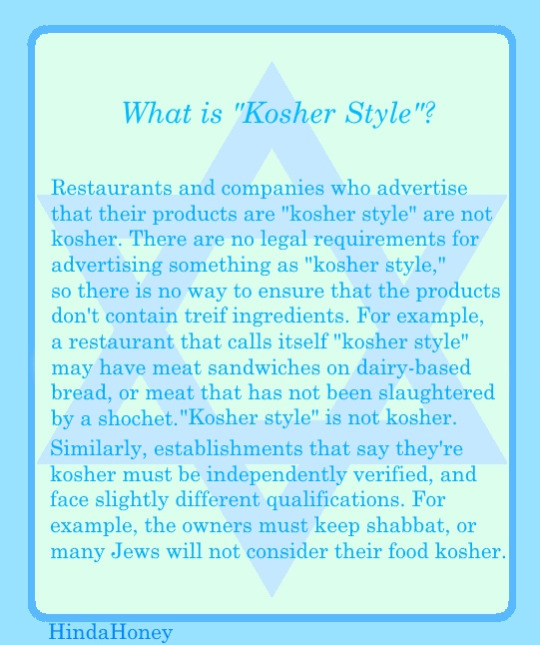

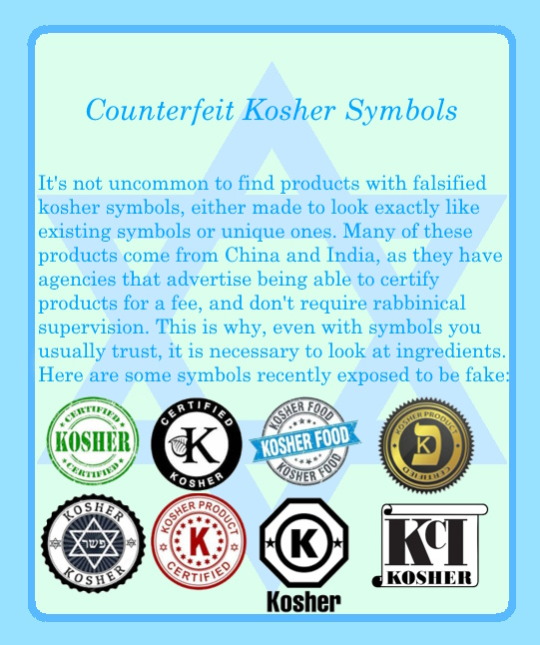

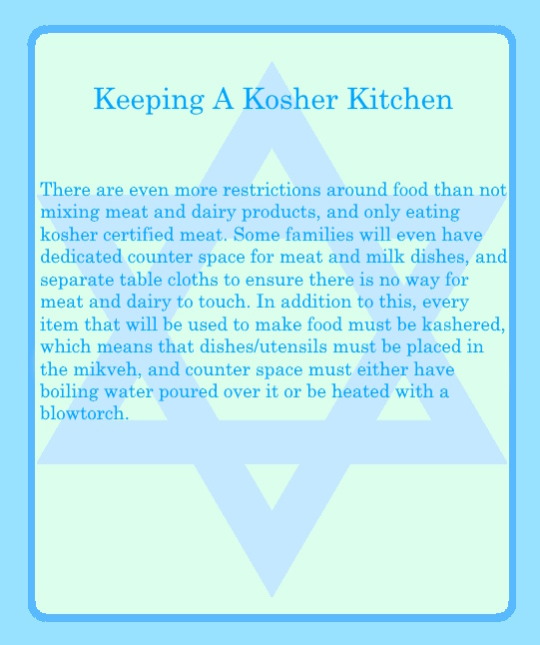
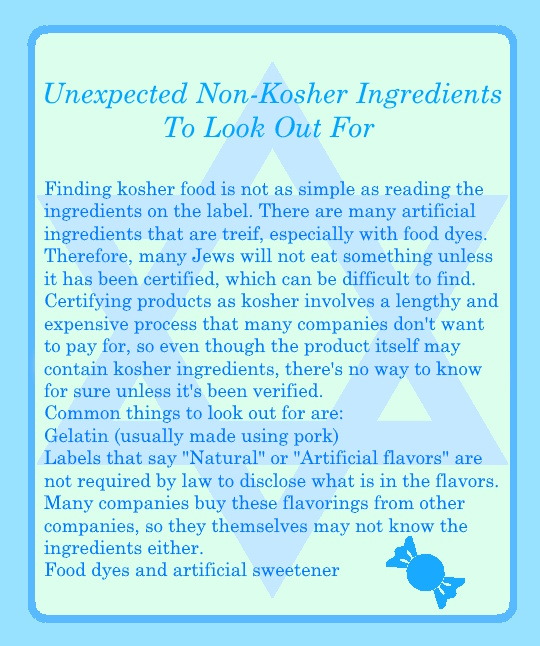

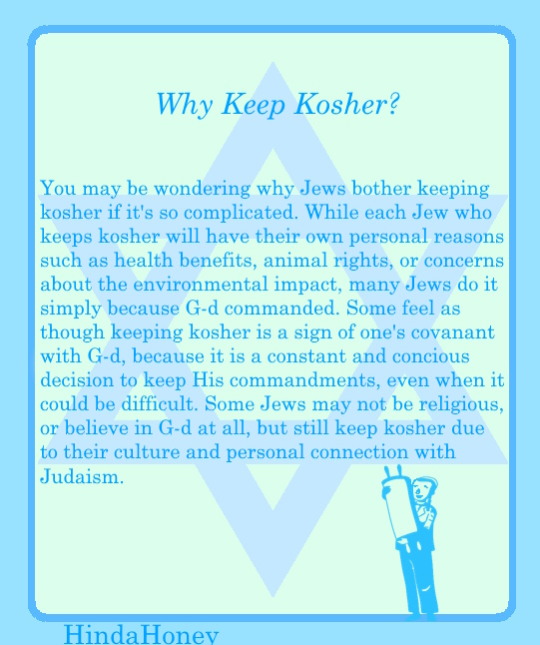

Here is a brief, non-comprehensive introduction to what "keeping kosher" means! A few things worth noting: the way people keep kosher can vary by minhag (custom), such as Sephardi Jews not eating fish with dairy, while Ashkenazi Jews will, but won't eat fish and meat on the same plate. I didn't get into kosher for Passover and the differences between minhag because it's an incredibly complicated topic, and the same applies for things like cholov yisrael, why chicken is fleishig but fish is pareve, and why some agencies are more trusted than others (Hebrew National, I'm looking at you). For a more detailed explanation, below the cut I have listed my sources. I hope you learned something new, thanks for reading!
If you liked this, you may also like my post about Shavuot and tzniut.
Sources:
The Basics of a Kosher Lifestyle
Kashrut: Jewish Dietary Laws - Judaism101
Kosher Certification, Orthodox Union
Kosher Flavors and Additives, Star-K
Orthodox Union: How To Handle Fake Kosher Symbols
WARNING: Fake Kosher Symbols Appearing on Products
#THIS TOOK FOREVER#jews#judaism#jumblr#jewish#frumblr#jewish history#jewish art#jewblr#judaica#kosher#keeping kosher#j tag#jewish stuff#jew stuff#jew tag#my post
644 notes
·
View notes
Note
Greetings Friend,
I hope you can help me
How did you go about learning Hebrew? As in what resources, classes, books etc. did you use to get a handle on the language?
I really struggle with languages, so I was hoping you had some advice or tips.
As a bit of background, I am currently a conversion student, going on almost 2.5 years now. I have long since completed the formal learning requirement with my synagogue (conservative) and according to my rabbis, I am free to attend the Beit Din and Mikvah whenever I so choose.
I know my neshama is Jewish, I know this is who I am/supposed to be. I know because of some unusual childhood experiences, and then when I started converting most aspects of the learning and practices came so naturally (granted nowhere near an orthodox level of observance, which isn’t necessarily the goal at this time, but certainly not something I am opposed to perusing) except for the languages.
As previously stated my rabbis say it is okay but something is holding me back from taking that final plunge (lol), and I believe it’s the language.
I still bench in English, and find it really stressful to attend services because I can barely muddle my way around the liturgy, or songs during a Shabbat dinner.
Of course this is just a personal hang up, and absolutely no criticism or shame on anyone else who converted without knowing/knowing very little of the language. Just, for some reason it just doesn’t feel right. I cannot bring myself to say I am actually a member of this wonderful, beautiful tribe before I have overcome this hurdle.
So… any advice?
A few answers for you, the first is most important:
Very Early On in my studying, one of the two rabbis at my synagogue wasn't leading and so she sat in the back, and I decided to sit next to her because i was still finding my footing in the basic service.
And at one point, it may have been for mi hamocha, the cantor starts with a NEW tune I don't know, and I'm still relying on the transliteration entirely and was still trying to memorize the FIRST tune.
And my rabbi leans over and whispers to me: "I have never heard this tune before in my life either."
And the anxiety broke, then. I didn't know this version for the song already and I was lost. But the rabbi sitting next to me also didn't know this tune.
Being Jewish is about always learning something new, even if you are encountering the same thing you've seen or done before dozens or hundreds of times. THAT is being Jewish. Rereading the same book every year and the same passages over and over, but still being a little lost or even finding something you never knew before?
That is being a Jew.
Jews may open a siddur and know what they'll find there, but we do not open it and expect to know everything about how that material is used or applied. And we don't feel a guarantee that life will not teach us something new today, or that someone's minhag won't be totally different from ours. Jews may know the Torah, they may even choose to memorize the mitzvot by heart, but we don't expect this memorization will ensure we never have a halakhic question in life!
So you see, the big scary fact is this: you might become a fluent reader of prayer book Hebrew, you might someday daven entirely in Hebrew, or even graduate rabbinical school, but still sometimes be thrown into being a stranger to something, even something you thought you knew.
But when you identify this and then embrace it, it becomes less scary and part of your Jewish identity. Being perfectly settled, fixed in your knowledge or your thinking or your skills — it honestly doesn't feel terribly Jewish to me.
And for many people born as Jews this can manifest as a type of reflexive embarrassment or self-consciousness for failing at jewishness somehow or having less knowledge for one reason or another. It can make folks defensive or ashamed or feel frustrated for the disconnect. I'm here to tell you that as converts we get the chance to illustrate joyfully that no Jew knows everything Jewish, and that is the experience of being Jewish. The biggest thing holding any of us back from learning the things we don't know is
a) being afraid to seem not Jewish enough or
b) being afraid to not know something
I have excellent news for your (and my) anxiety:
A) almost all Jews worry about how Jewish they seem in some fashion or another so that's normal and,
B) since only hashem knows everything, our job is to not know everything, but to be willing to learn anything. Also we're better in numbers! Two heads are better than one and a minyan is better than that! Everyone doesn't know something, but none of us are alone as Jews. Which is why we become Jewish in community, and not alone. Because someone else might know what we don't!
Get it?
Step #1: you have to jump feet first into not already knowing something perfectly and start knowing less but learning more.
If you are reading the English words and English translations to daven, this means you need to stop. This was your training wheel. And you are not finding your own balance relying on it.
If your siddur has transliterations of the hebrew, bring a little index card next time and cover up the English as you daven for a start. I familiarized myself with the Hebrew because I was saying everything in Hebrew out loud every single time. Once you know the shema by heart more or less (for example), all you have to do is learn the alphabet to prompt your memory to progress further in your Hebrew learning.
That's how kids learn any language. We speak before reading as children. So speak and chant and sing in Hebrew. Whisper the Hebrew. As you get more comfortable, learning to read Hebrew will be an exercise you can even do during the middle of shabbat.
Because you know what the prayer says, and you just need to match the words you see to the sounds you know.
Step #2: know the aleph bet before you attempt reading comprehension of all words.
Things that I used to learn the aleph bet:
Hebrew scripts (the app by drops)
Write it! Hebrew app
Victoria Hanna's The Aleph Bet Song (Hosha'na) because uh she sings the aleph bet and pronounces it
Behrman House Books: Hineni: prayerbook Hebrew for adults; aleph isn't tough! For adults. The kids stuff is good too, I'm not ashamed to say I own "time to read Hebrew!" 1&2
(The Hebrew by inbal on Amazon looks new but good possibly?)
If you want a siddur set up specifically to practice matching transliteration and Hebrew aleph bet, I recommend Chayim Alevsky's My Siddur (choose the minhag variant you use! I bought the Sephardic/Israeli as I don't use ashkie pronunciations.
There will be slight differences of you're used to liberal inclusion of say, the matriarchs, but in general this is a solid practice book for anyone. Transliteration is given word by word, with full word blocks reading in the same direction as Hebrew. At the bottom of the page certain (possibly newer to the learner) words will be defined.
It also now has an app which looks like this:
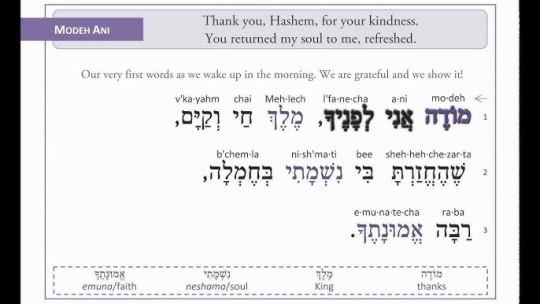
So you see this is pairing the reading direction of Hebrew words with the sounds spelled out in English to strengthen your Hebrew. If you try to read the transliteration in the English direction word by word, you'll be reading it backwards and starting with v'kayahm, instead of "modeh" (or "modah" feminine). Further even if you're starting correctly with modeh, the English word is still left to right over the Hebrew right to left. so this forces you to be attentive to the Hebrew itself and slow down word by word!
The layout in the print versions means you can cover up the transliteration to test your learning of certain words, and only check if you forget.
I still am not perfect at everything and I truthfully attentively practice Chinese far more than Hebrew reading, but this is what helped me.
Good luck!
100 notes
·
View notes
Text
If you're not a queer Jew, patience is a virtue :)
313 notes
·
View notes
Note
Joining the latke discourse: I'm allergic to potatoes so every year I make myself plantain latkes instead! And sometimes I skip the effort and just do regular tostones. Then make guac to go with, not sure if that's the Chanukah vibe but delicious!
That sounds epic, actually. I've never tried fried plantains, but it is 100% on my bucket list. I think that's actually a really cool minhag to work around your allergy!
132 notes
·
View notes